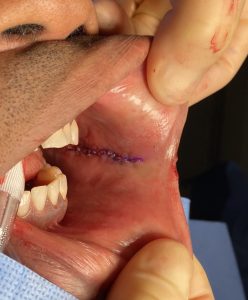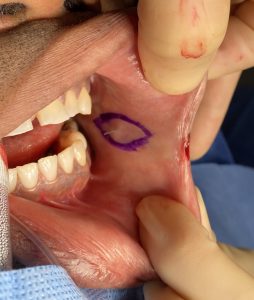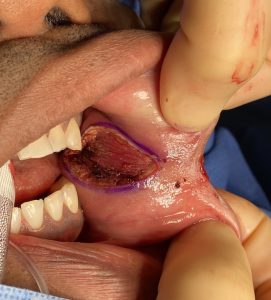
Anatomically between the cheekbone and the jawline a muscle layer exists known as the buccinator muscle. It is a muscle that runs east-west and originates anteriorly from the alveolar processes of the upper and lower jaws. It extends back to the front edge of the pteryomandibular raphe. At its most anterior portion near the mouth the buccinator muscle fibers converge at the mouth corner with the circumferential orbicularis oris muscle. Given the location of its attachments contraction of the buccinator muscle pulls the corner of the mouth back and flattens the cheek inward. This serves as an assistive function in chewing to work in concert with the masticatory muscles.
From an aesthetic standpoint many younger patients desire a more inward or concave shape to their mid-cheek region between the cheek bones and the jawline. Some simulate this effect by sucking in their cheeks which is really activation of the buccinator muscle. Defatting procedures, such as buccal lipectomies and perioral liposuction, are the common procedures to try and create this facial reshaping effect. It is more successful in some than others. The thinner one’s face is the more successful those reductive cheek reshaping procedures are.

There is no adverse functional sequelae from removing these small inner layers of the cheek. This is a technique that is borrowed from doing many buccal mucosal graft harvests for urethral reconstruction for Urologists in children and adults. The mucosal scar line heals wells and I never observed an adverse scar or infection. It also borrows somewhat from the concept behind cheek dimple surgery where reducing the muscular interface between the skin and mucosa is what creates the more localized cheek indentation
For those patients seeking a maximal effort in cheek reductive contouring buccinator myectomies is an option along with buccal lipectomies and perioral liposuction to maximize the effect.
Dr. Barry Eppley
Indianapolis, Indiana




